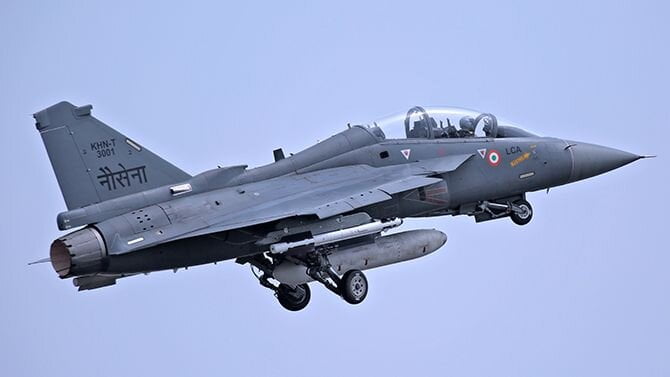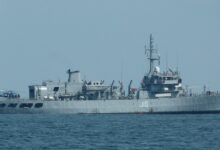Costing A Total Of Rs 9,000 Crore, HAL Will Develop The LCA-Mk2: A Game-Changer

- A total development budget of Rs 9000 crore, including the Rs 2500 crore that has already been spent, has been approved by the CCS.
- Tejas Mk2 will be ready for use. HAL anticipates an additional order of 210 aircraft in addition to the six squadrons.
The Cabinet Committee on Security (CCS) approved the Tejas Mk2 project, an indigenous light combat aircraft, on September 1, 2022. For the design and construction of Tejas Mk2 fighter jet prototypes, test flights, and certification, the CCS has approved Rs 6,500 crore.
The Tejas Mk2, which is referred to as a 4.5-generation fighter aircraft, will be classified as middleweight rather than lightweight. More modern Indian-made technologies will be on board, and it will be 70% more indigenous than the Mark IA was. Hindustan Aeronautics, a state-owned company, produced this single-engine, multipurpose, supersonic combat aircraft (HAL).
The early design studies for the Mk 2 were completed in 2014, and in 2015, the detailed design stage began. At the Aero India air show in 2019, the updated fighter made its debut. It belonged to the 17.5-ton class and had integrated IRST and close-coupled canards. Beginning in February 2021, the Tejas Mark 2’s metal cutting process. The original “roll out” date for the first prototype was set for August 2022, however it has since been postponed until the end of 2022. In late 2023, the first launch is anticipated. Four prototypes are initially anticipated.
Financial Express Online quotes Aerospace & Defence Analyst Girish Linganna as saying, “The improved Tejas LCA will have various new features to boost its capacity to fly and battle. Tejas 2.0 will have 98 Kilonewton-thrust GE-414 engines, which are more powerful than the present model. It will be able to fly farther and transport more weaponry and cargo than the current model thanks to this. Additionally, an Indian-made Active Electronically Scanned Array (AESA) radar would be installed on the new plane. This will be a significant improvement over the existing multi-mode ELTA EL/M-2032 radar.
Air Chief Marshal VR Choudhary said in July that six squadrons of Tejas Mk2—a total of 108 aircraft—would be ordered. The BrahMos missile will be included with the latest version of the aircraft. Like the Mirage-2000, it will also be able to launch laser-guided bombs.
Without refuelling, it can continue longer. Also included for the first time is an onboard oxygen generation system. It will be able to transport powerful stand-off weaponry like the BrahMos, Scalp, Crystal Maze, Spice-2000, and Spice. The Mk2 can carry 6,500 kg more than the LCA, which can only carry 3,500 kg, and is 1350 mm longer, has canards.
He claimed that “near the wings of the plane, a canard has been fitted. Such canards are found on contemporary fighters as the Sukhoi-30MKI, Eurofighter, and Rafale. Elevons are located both inboard and outboard on the wing’s trailing edge. The Tejas Mk2’s cockpit will be rebuilt for ergonomics and maintenance, in addition to the armaments and engine. Steel, titanium, carbon composites, and aluminium alloys are used in the manufacture of fly-by-wire aircraft.
More about Mk2
It will include network-centric warfare capabilities supported by the IAF’s AFNet digital information grid, a software-defined radio-based tactical data link for secure communication, and a potent electronic warfare system.
“A touch-sensitive large area display and a wide-angle holographic head-up display system that can be employed with night vision goggles will be the focal points of the glass cockpit. To make the task of the pilot easier, the Mk2 will have a hand-on throttle-and-stick combination, with the right hand on the stick and the left hand on the throttle.
The LCA Mk2 should be ready by 2024, and testing should be over by 2027, Top IAF officer. This is in line with earlier information that HAL will begin developing a small batch of high-speed taxis in 2025 and begin testing them in 2023. By 2027, the entire development process will be finished, and in 2030, full-scale mass production will begin. In 2028, Tejas Mk2 will be ready for use. HAL anticipates an additional order of 210 aircraft in addition to the six squadrons.
Dwindling numbers of fighter squadrons
This will aid in the Indian Air Force’s fighter fleets, which now number 30 whereas 45 squadrons are needed
A total development budget of Rs 9000 crore, including the Rs 2500 crore that has already been spent, has been approved by the CCS. The Defence Research and Development Organisation (DRDO) has established a target date of 2027 to complete the flight testing based on information that is already in the public domain.







Facebook Comments